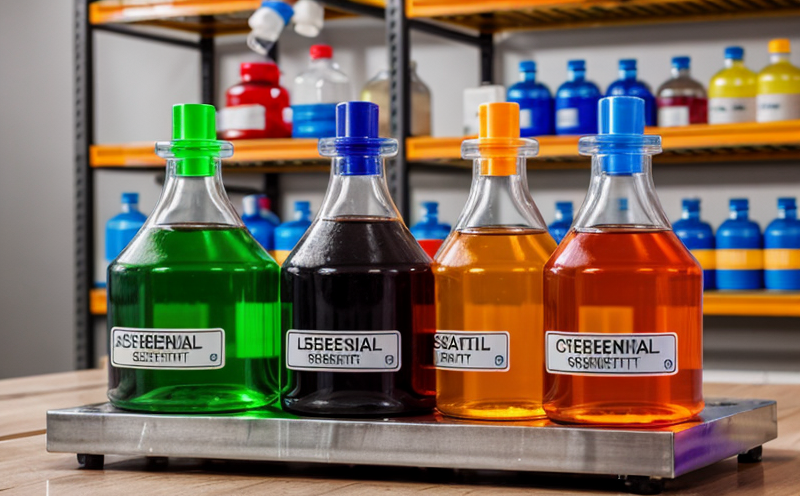PBB (Polybrominated Biphenyls) Testing in Plastics
The testing of Polybrominated Biphenyls (PBB) in plastics is a critical component within the broader framework of consumer product safety, especially as concerns over environmental and health impacts have grown. PBBs are brominated flame retardants that were used extensively in various applications before being phased out due to their persistence, bioaccumulation, and potential toxicity.
Our laboratory offers specialized services for PBB testing using rigorous analytical methods compliant with international standards such as ISO 18934-2 and ASTM D6705. These tests are essential for ensuring that consumer products meet regulatory requirements set by agencies like the European Union's REACH or the U.S. Consumer Product Safety Commission (CPSC).
The process involves several key steps, starting with the collection of samples from raw materials to finished goods. Specimen preparation is critical and may include grinding, homogenization, and dissolution based on the type of plastic being analyzed. Once prepared, the sample undergoes extraction using solvents followed by purification techniques like distillation or chromatography.
The extracted compounds are then subjected to instrumental analysis typically involving gas chromatography with mass spectrometry (GC-MS) which provides high sensitivity and specificity for detecting even trace levels of PBBs. This approach ensures accurate quantification according to the accepted limits set forth by regulatory bodies.
Our laboratory adheres strictly to these procedures ensuring reliable results that can be used confidently when making decisions about product safety compliance or R&D activities aimed at reducing hazardous substances in formulations.
- GC-MS: Gas Chromatography coupled with Mass Spectrometry for precise identification and quantification of PBBs.
- Solvent Extraction: Used to liberate the target compounds from solid matrices into solution.
- Purification Techniques: Essential steps to remove interferences and enhance detection sensitivity.
- Quantification Limits: Ensuring that regulatory compliance can be confidently demonstrated even at very low concentrations.
The importance of this testing cannot be overstated, given the stringent regulations surrounding chemical safety. It helps manufacturers ensure their products are free from harmful substances while also contributing to sustainable practices by promoting safer alternatives in formulation development.
For those involved in quality management or compliance roles, understanding these nuances can provide valuable insights into how best to integrate such testing into existing workflows without disrupting operations unnecessarily.
Why It Matters
The issue of PBB contamination is not merely academic; it has significant implications for both the environment and human health. Brominated flame retardants like PBBs were widely used in plastics until they were banned due to their adverse effects on ecosystems and wildlife.
In consumer products, PBB presence can lead to unintended exposure risks if not controlled properly during manufacturing processes. Regulatory bodies worldwide have implemented stringent guidelines aimed at minimizing these exposures, making it imperative for industries to comply rigorously with testing protocols.
Failure to adhere could result in product recalls, reputational damage, and legal liabilities which underscore the importance of proactive measures such as regular monitoring through robust analytical methods like those provided by our laboratory. By incorporating PBB testing into routine quality assurance practices, companies demonstrate commitment not only towards regulatory adherence but also towards protecting public welfare.
Moreover, from an R&D perspective, this kind of testing plays a crucial role in driving innovation towards safer materials and processes. As societies become more aware of the impacts of chemical usage on health and sustainability, there is increasing pressure for industries to adopt greener technologies that minimize risks associated with hazardous substances.
Quality and Reliability Assurance
The quality assurance measures implemented in our laboratory ensure that every test conducted meets the highest standards. From sample preparation through analysis and reporting, we follow internationally recognized best practices to deliver accurate results consistently.
- Sample Preparation: Rigorous guidelines are followed for ensuring samples are representative of the product being tested.
- Analytical Techniques: Advanced instrumentation including GC-MS is utilized to achieve precise measurements.
- Data Validation: Multiple checks are performed throughout the process to validate data integrity and accuracy.
- Traceability: All results can be traced back to specific samples, ensuring accountability in case of discrepancies or challenges.
- Training and Certification: Staff undergo continuous training aligned with industry standards and maintain relevant certifications.
By adhering to these stringent protocols, we guarantee that clients receive reliable data they can trust when making important business decisions related to chemical safety compliance.
Customer Impact and Satisfaction
Our commitment to excellence extends beyond just delivering accurate test results; it encompasses providing comprehensive support tailored to individual needs. Our team works closely with clients throughout the testing process, offering guidance on sample preparation, interpretation of results, and strategies for compliance.
This level of customer service translates into greater satisfaction among our clients who appreciate knowing that their concerns are addressed thoroughly. Positive feedback from satisfied customers reflects well on us, reinforcing our reputation as a reliable partner in ensuring product safety and regulatory adherence.
Furthermore, by leveraging advanced analytical techniques, we help businesses stay ahead of changing regulations and market demands. This proactive approach enables them to anticipate challenges before they arise, fostering long-term partnerships based on mutual trust and respect.





